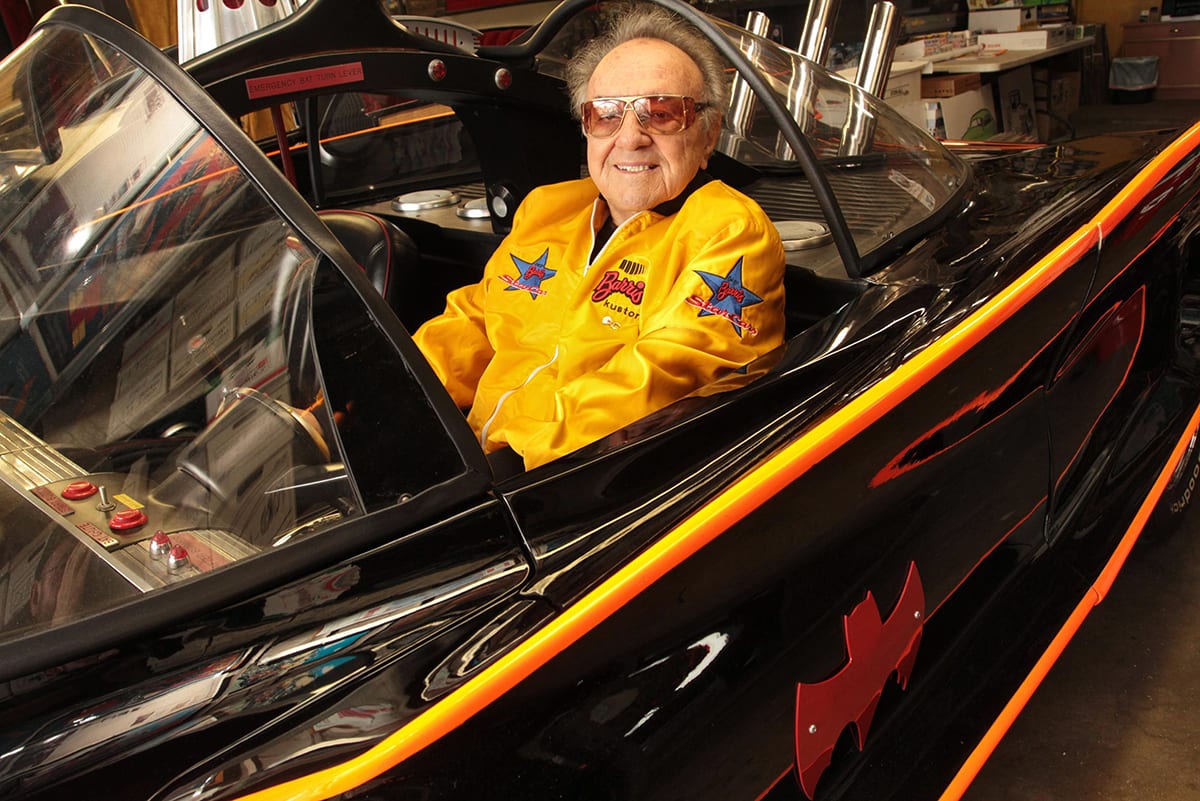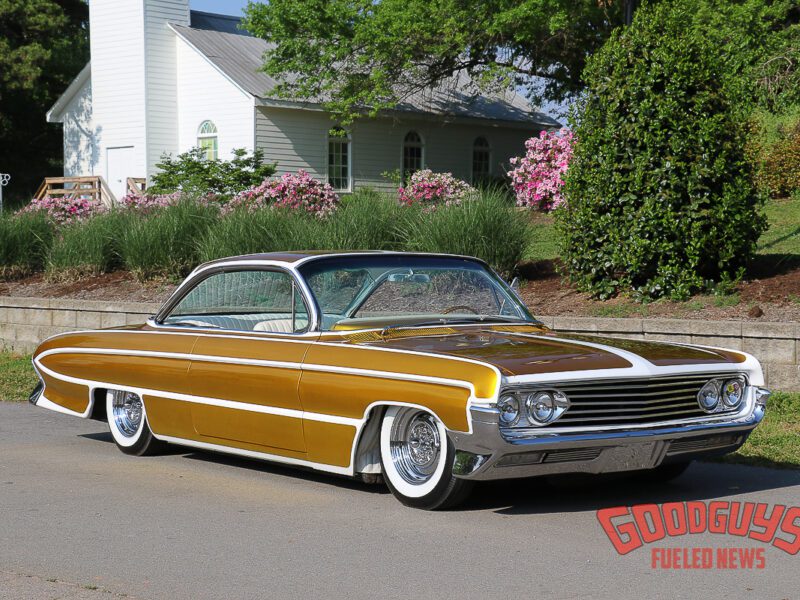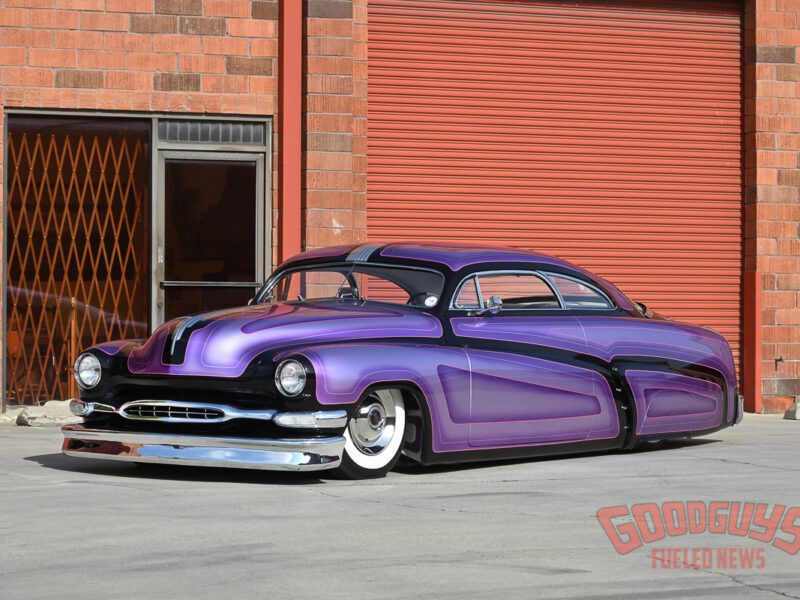George Barris – King of the Kustomizers
The story of hot rodding in America cannot be told without telling the story of George Barris, the most well-known kustom kar kraftsman of his, or any other, era. Author Tom Wolfe, astute chronicler of art and culture, chose Barris as the focus of his famous article, “The Kandy-Kolored Tangerine-Flake Streamline Baby,” where he likens Barris to a t-shirt-clad Picasso.
Of Greek descent, Barris was born in Chicago, Illinois, in 1925. His parents passed away when he and his brother Sam were toddlers and the pair were sent to live with relatives in Roseville, California. Both children showed an early interest in music and drawing. George was also particularly adept at building balsawood model cars and planes. And yes, he did modify the cars, whittling that balsa into unique shapes. He took home more than one trophy at model contests sponsored by local hobby shops.
Full-size cars came soon thereafter. Before they were even teenagers, the family (which ran a Greek restaurant) gifted George and Sam with a derelict 1925 Buick in need of mechanical repair. The boys dove into the project with gusto — their enthusiasm also inspired them to tweak the car’s aesthetics. They hammered the body into shape and painted it blue and orange.
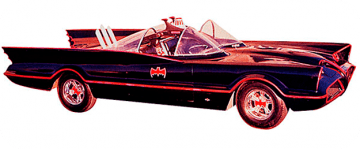 During his high school years, George honed his growing passion for cars by hanging out at Brown’s Body Shop in Roseville after school, where he watched and learned metalwork. Soon thereafter George picked up a used ’36 Ford convertible, which he customized. He molded the lights and seams, chopped and lowered it, and shaved the handles. It wasn’t long before locals learned of his talents. His first commercial customer followed shortly.
During his high school years, George honed his growing passion for cars by hanging out at Brown’s Body Shop in Roseville after school, where he watched and learned metalwork. Soon thereafter George picked up a used ’36 Ford convertible, which he customized. He molded the lights and seams, chopped and lowered it, and shaved the handles. It wasn’t long before locals learned of his talents. His first commercial customer followed shortly.
When World War II commenced, Sam joined the Navy and George tried out for the Merchant Marine, which required that he move to Los Angeles. So, he moved south, bringing his body shop tools with him in the ’36, a ride that now also sported a Packard grille and push-button doors and deck lid.
While the Merchant Marine assignment never materialized, he picked up work at a couple of local body shops, adding painting to his skillset. When Sam was discharged in L.A. in 1945, he tracked down his brother and together they decided to open their own shop. Barris Kustoms opened its doors in 1946.

The Barris brothers struggled at first until a wild, customized ’41 Buick they built took top honors at the first Hot Rod Exposition Show in Los Angeles in January 1948. The resultant boost in reputation and business prompted a move to a new shop in Compton.
The duo steadily built up a clientele keen on their custom — now with K — vision. Their growing popularity also drew interest from Tinseltown, and they were soon creating cars for studio executives and movie stars. It was also their entree into designing cars for the films themselves.
George also had masterful understanding of self-promotion. He became fast friends with Robert Petersen, founder of Hot Rod magazine, and realized early on the power of the printed page. He cleverly became an advertiser and contributor to HRM, writing and photographing car features and custom car shows.
“Barris was promoting customizing, which was helping to promote himself, and his byline meant that he was the arbiter of great customizing to those reading the article or feature,” explained Thom Taylor, renowned car designer and former senior editor at Hot Rod.
Moreover, he left little to chance when his own cars were being photographed. The late Tom Medley, early HRM staffer, loved to recount the story of one photo session with Barris. “We were all set go,” Medley recalled, “and Barris shows up with his low-slug custom and two really large assistants. ‘George,’ we asked, ‘who are those guys?’ ‘You’ll see.’ Then George popped the trunk, and the two guys climb in. George closed the lid. Now the car had Barris’s preferred stance, with the tail end of the car sitting just right.”

During this early period, George and Sam Barris created two iconic customs. The most famous being the Hirohata Merc, constructed in 1953 for Bob Hirohata. The car – a low-slug ’51 Merc, chopped, smoothed and skirted – dazzled at the General Motors Motorama auto show, blowing away the work of Detroit’s top designers. It also helped established the early 1950s Mercury as a popular basis for custom car design.
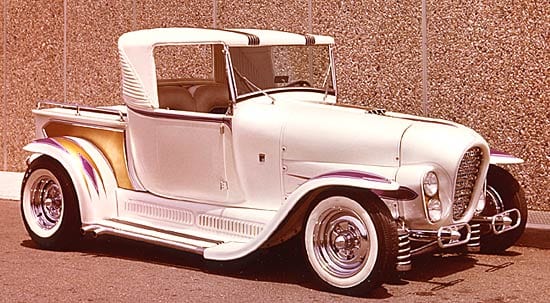 Nearly as well-regarded was the Barris brother’s Ala Kart, a Ford Model A roadster pickup. It won the AMBR (America’s Most Beautiful Roadster) back-to-back, and was a regular on the silver screen, usually accenting background scenes.
Nearly as well-regarded was the Barris brother’s Ala Kart, a Ford Model A roadster pickup. It won the AMBR (America’s Most Beautiful Roadster) back-to-back, and was a regular on the silver screen, usually accenting background scenes.
Which brings us to the many Barris vehicles that appeared in dozens of movies and television shows. The list is endless, but a few of the marquee rides included the Batmobile for the original “Batman” TV series, the Munster Koach and Drag-U-La for “The Munsters,” the Olds Toronado in “Mannix,” the 1921 Olds touring car for “The Beverly Hillbillies,” and the fictional 1928 Porter in “My Mother the Car” – and many, many more. Barris also made special cars (and golf carts) for countless celebrities like Zsa Zsa Gabor, Bob Hope, Bing Crosby, Ann Margret, Glen Campbell, and Elton John.
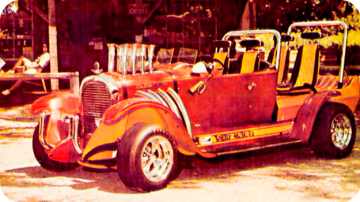 George continued to build movie cars and corporate show cars throughout the early 2000s, including a custom Toyota Prius for the New York Times! In addition, his showroom/shop/museum in North Hollywood became a must-see stop for car savvy tourists.
George continued to build movie cars and corporate show cars throughout the early 2000s, including a custom Toyota Prius for the New York Times! In addition, his showroom/shop/museum in North Hollywood became a must-see stop for car savvy tourists.
The impact George Barris had on hot rodding and auto customizing is incalculable. “There are so many talented people in the world,” Taylor said. “but they don’t all have a full pie. What’s that? It’s all of the pieces put together that make an Ed Roth or a George Barris. Talent, salesmanship, marketing, business sense, promotion, ideas, drive, money, and a great team behind them that helps to make it all happen. Barris had all of the pie.”
George Barris passed away in November 2015, at age 89. Fittingly, his casket was adorned with Batmobile wings.

